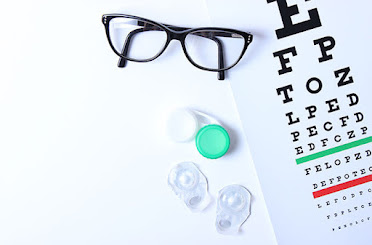Why Do My Daily Contact Lenses Feel Dry So Quickly? Common Causes and Fixes
Daily contact lenses offer convenience and hygiene, but for some wearers, dryness sets in sooner than expected. If your eyes feel dry shortly after inserting your daily contacts, you’re not alone. Dryness and discomfort can be caused by a variety of factors—some environmental, some lifestyle-related.
In this blog, we’ll explore why your daily disposable contact lenses might feel dry so quickly and what you can do to enhance comfort throughout the day.
1. Environmental Factors
a) Dry Air and Low Humidity
Whether you’re in a climate-controlled office or a dry outdoor environment, low humidity can evaporate moisture from your lenses quickly.
Solution:
Use a humidifier in your room or workspace to maintain moisture in the air.
Avoid direct exposure to fans, heaters, or air conditioning vents.
b) Wind and Outdoor Exposure
Spending time outdoors, especially on windy days, can lead to faster tear evaporation, drying out your lenses.
Solution:
Put on wraparound sunglasses to keep wind from damaging your eyes.
Use lubricating eye drops before and after going outside.
2. Prolonged Screen Time
Staring at screens—whether it’s a computer, smartphone, or TV—reduces your blink rate. This leads to less moisture being spread across the lens and your eye surface, causing the lenses to dry out more quickly.
Solution:
Follow the 20-20-20 rule: Every 20 minutes, look at something 20 feet away for at least 20 seconds.
Try to blink more frequently on purpose.
Adjust your screen brightness and position to reduce eye strain.
3. Dehydration and Diet
Hydration plays a key role in tear production. If your body is dehydrated, your eyes will produce fewer tears, leading to dryness.
Solution:
Drink plenty of water throughout the day.
Reduce consumption of caffeine and alcohol, which can dehydrate you.
Eat a balanced diet rich in omega-3 fatty acids, which support healthy tear production.
4. Lens Material and Fit
Daily lenses are designed for single-day use, but not all lens materials offer the same moisture retention. Some may dry out faster than others, depending on your tear chemistry and eye shape.
Solution:
Talk to your eye care provider about trying lenses made with newer, high-moisture materials like silicone hydrogel.
Make sure your lenses fit properly; a poorly fitting lens may move around more, disrupting your tear film.
5. Allergens and Eye Sensitivities
Environmental allergens like pollen, dust, and pet dander can irritate your eyes, exacerbating dryness and discomfort.
Solution:
Use daily disposable lenses to minimize allergen buildup.
Rinse your eyes with preservative-free saline drops before inserting your lenses.
To make your eyes even more irritated, refrain from rubbing them.
6. Improper Lens Handling
Touching your lenses with dry or dirty hands can affect their surface moisture and comfort.
Solution:
Before handling your lenses, always make sure your hands are completely clean and dry.
Avoid using soaps with moisturizers or fragrances that can transfer residue to your lenses.
7. Underlying Eye Conditions
Conditions like dry eye syndrome or blepharitis (inflammation of the eyelids) can contribute to contact lens discomfort.
Solution:
Schedule an eye exam to rule out medical conditions.
Use artificial tears or prescribed treatments as recommended by your eye doctor.

Comments
Post a Comment